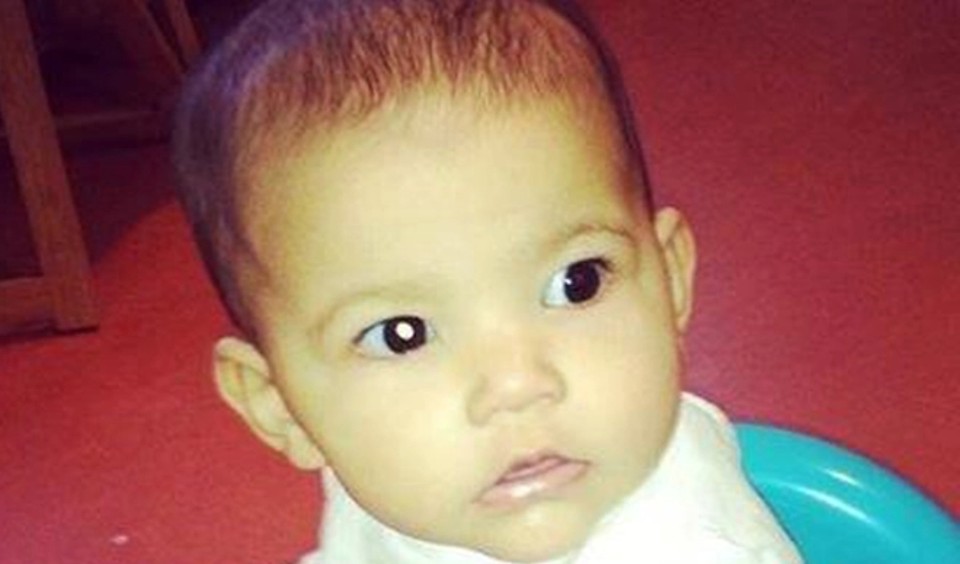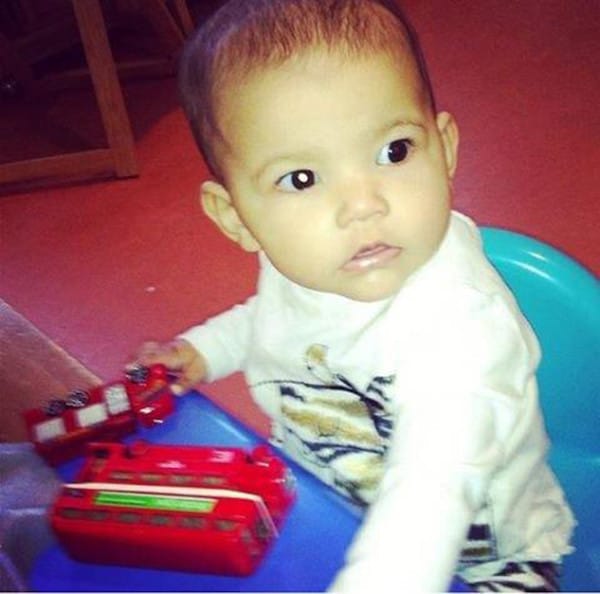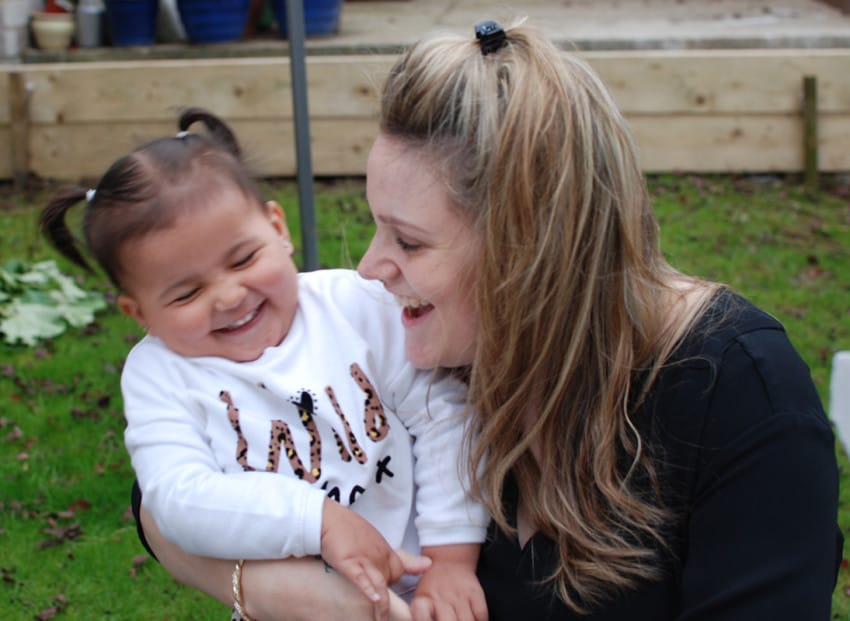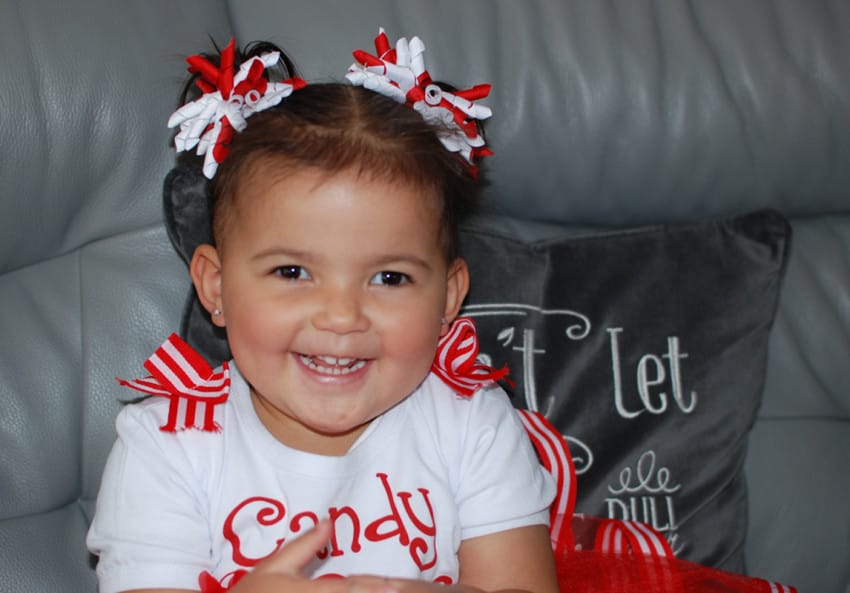Tyraah Bell-Lama was diagnosed with retinoblastoma at the age of eight months when doctors discovered a tumor behind her right eye.
TYRAHH Bell-Lama was just eight months old when her mother, Jade Bell, 27, took her to their Reading GP because she noticed a white glow behind her baby’s eye.
Her doctor quickly referred her to the Royal Berkshire Hospital in Reading, where she was given blood tests and scans before being transported to the Royal London Hospital, as the youngster’s vision was also drifting.

The tot was diagnosed with retinoblastoma, a rare form of eye cancer, there on Christmas Eve 2014.
“She got an eye scan and they knew it was serious, but they couldn’t tell me what it was precise,” Jade revealed.
“I had to wait for the Royal London Hospital to call.”
“I had to go grab her older brother Jaiden, who is now seven, from school after the scan.”

“When I arrived there, I just started crying because it was too much.”
Doctors verified to Jade and her boyfriend Tyraah’s father Rabindra, 29, that their young girl had retinoblastoma after weeks of waiting.
Despite the fact that Jade had anticipated the tragic news, she claimed it was still “a shock to hear the words out loud.”
With Christmas, the next day, their family’s celebration of Tyraah’s first holiday season was considerably different from what they had expected.
“There was nothing to celebrate,” Jade explained. “We had no notion what the future held at the time.”
After the presents were opened and the festivities were done, Jade decided to share the tragic news with the rest of her friends and family in the hopes of raising awareness about the condition.
She posted a status about her situation on Facebook.
“I wanted to make sure that if another child experienced these symptoms, they would be able to catch it early,” she explained.
Only a few weeks later, on January 14, Tyraah received the first of six rounds of chemotherapy, which was thankfully successful.
She was in and out of the hospital for a few months due to treatment side effects.
“Around 98 percent of children in the United Kingdom will survive retinoblastoma, but many will suffer the implications of a delayed diagnosis, which can include the loss of one or both eyes.” Patrick Tonks, CEO of the Childhood Eye Cancer Trust, said
“It was terrifying to watch her, but the chemo worked, and she was much better once she finished the therapy,” Jade added.
Tyraah now undergoes check-ups every eight weeks to ensure that her cancer does not return, but she is doing really well overall.
Fortunately, her eye was saved, and while her vision is impaired, doctors are striving to enhance it by covering her left eye when she is out and about.
The family has another reason to rejoice this Christmas, as Jade gave birth to their third child, Mariaah, on Monday night, following a happy 2016.

“This Christmas feels so different,” she observed as she reflected on her experience.
“We’ll travel back to my grandmother’s and see as much of the family as possible.”
In the United Kingdom, one child is diagnosed with retinoblastoma every week, and the two primary signs are a squint and a white glow in the child’s eye, which can be seen in dim lighting or in a photo taken with a flash.

Retinoblastoma is a type of cancer that affects the retina.
Retinoblastoma is an uncommon type of eye cancer that can affect youngsters, according to NHS Direct (usually under five years of age).
Retinoblastoma can generally be successfully treated if caught early (children treated for retinoblastoma diagnosed at an early stage have a survival rate of more than 95 percent ). It’s usually identified before a child turns one year old if both eyes are affected. It’s more likely to be diagnosed later if it only affects one eye (between the ages of two and three). The following are some of the signs and symptoms:
A strange white reflection in the pupil – this can be seen in images where only the healthy eye is red from the flash, or in a dark or artificially lit environment.
Iris color changes — sometimes only in one eye, sometimes only in one part of the eye
Inflammation of the eye — your child is unlikely to complain of pain.
Squinting or poor vision – your child may be unable to focus on faces or objects, or they may be unable to regulate their eye movements (this is more likely when both eyes are damaged); they may claim that they can’t see as well as they once could.
Something other than retinoblastoma could be causing these symptoms. However, you should see your doctor as quickly as possible to get them checked.
“Christmas is a popular time for snapping photos and collecting memories, so it’s crucial that people are aware of the signs of eye cancer in children at this time of year,” said Patrick Tonks, chief executive of the Childhood Eye Cancer Trust.
“Retinoblastoma is uncommon cancer, and similar symptoms are frequently caused by other, less dangerous reasons, so parents need not be concerned.”
“However, if you notice anything unusual about your child’s eyes over the holidays, we recommend having them looked out as soon as possible just to be safe.”
“Around 98 percent of children in the United Kingdom will survive retinoblastoma, but many will suffer the implications of a delayed diagnosis, which can include the loss of one or both eyes.”
